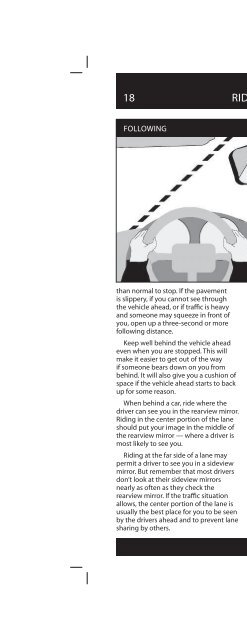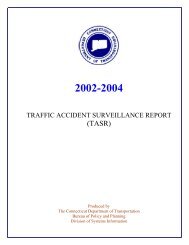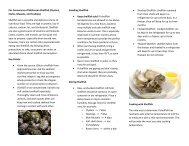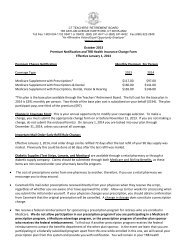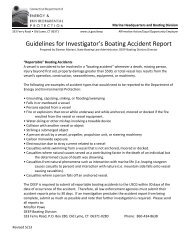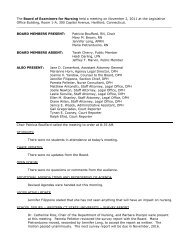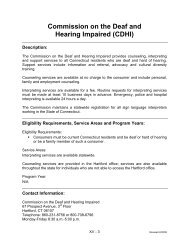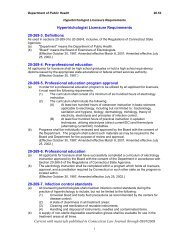The Connecticut Motorcycle Operator's Manual - CT.gov
The Connecticut Motorcycle Operator's Manual - CT.gov
The Connecticut Motorcycle Operator's Manual - CT.gov
You also want an ePaper? Increase the reach of your titles
YUMPU automatically turns print PDFs into web optimized ePapers that Google loves.
18 RIDE WITHIN YOUR ABILITIES<br />
FOLLOWING<br />
than normal to stop. If the pavement<br />
is slippery, if you cannot see through<br />
the vehicle ahead, or if traffi c is heavy<br />
and someone may squeeze in front of<br />
you, open up a three-second or more<br />
following distance.<br />
Keep well behind the vehicle ahead<br />
even when you are stopped. This will<br />
make it easier to get out of the way<br />
if someone bears down on you from<br />
behind. It will also give you a cushion of<br />
space if the vehicle ahead starts to back<br />
up for some reason.<br />
When behind a car, ride where the<br />
driver can see you in the rearview mirror.<br />
Riding in the center portion of the lane<br />
should put your image in the middle of<br />
the rearview mirror — where a driver is<br />
most likely to see you.<br />
Riding at the far side of a lane may<br />
permit a driver to see you in a sideview<br />
mirror. But remember that most drivers<br />
don’t look at their sideview mirrors<br />
nearly as often as they check the<br />
rearview mirror. If the traffi c situation<br />
allows, the center portion of the lane is<br />
usually the best place for you to be seen<br />
by the drivers ahead and to prevent lane<br />
sharing by others.<br />
Being Followed<br />
Speeding up to lose someone<br />
following too closely only ends up with<br />
someone tailgating you at a higher<br />
speed.<br />
A better way to handle tailgaters<br />
is to get them in front of you. When<br />
someone is following too closely,<br />
change lanes and let them pass. If you<br />
can’t do this, slow down and open up<br />
extra space ahead of you to allow room<br />
for both you and the tailgater to stop.<br />
This will also encourage them to pass.<br />
If they don’t pass, you will have given<br />
yourself and the tailgater more time and<br />
space to react in case an emergency<br />
does develop ahead.<br />
Passing and Being Passed<br />
Passing and being passed by another<br />
vehicle is not much diff erent than with a<br />
car. However, visibility is more critical. Be<br />
sure other drivers see you, and that you<br />
see potential hazards.


